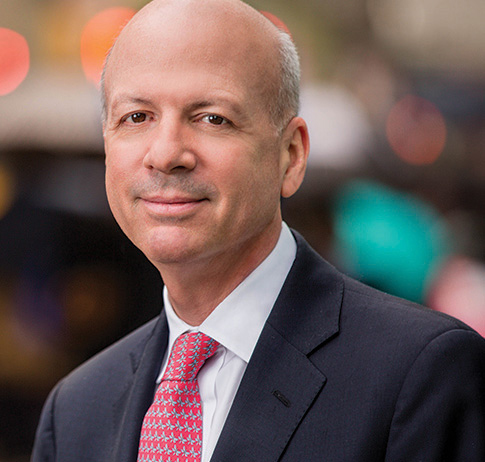M. Ridgway Barker co-authored this article with Joseph Bambara, CIPP/US.
On the Jersey side of the Hudson River across from Manhattan's Financial District, there is an office tower with "DTCC" emblazoned across the top, but few outside of Wall Street realize that in this building, occupied by the Depository Trust & Clearing Corp hosts a platform that provides clearing and settlement services to the financial services markets including records for most of the world's securities, representing some $48 trillion in assets--from stocks and bonds to mutual funds and derivatives.
In the 1970s, Wall Street created a DTCC predecessor to replace a system that had been powered by “runners” traversing the alleys of lower Manhattan delivering stock certificates from brokerage house to brokerage house. DTCC still has paper certificates in its vaults, but records related to the 90 million daily transactions it handles are kept electronically on its old IBM mainframe servers and backed up in various locations. Thousands of financial institutions and exchanges in 130 countries rely on DTCC for custody, clearing, settlement and other clerical services.
Back in 2018, a DTCC found that blockchain or distributed ledger technology (DLT) is scalable enough to support the daily trade volumes of the United States equity market. They developed plans to migrate its Trade Information Warehouse to use DLT. At that time, this was the largest live implementation of DLT. DTCC is looking to leverage DLT to facilitate post-trade processes and reduce risks and costs.
Moving accounts in DTCC's Trade Information Warehouse to a customized digital ledger will provide many benefits. The DTCC warehouse keeps an electronic "golden record" of events such as maturity dates, payment calculations and other activities needed to clear and settle these securities daily. Unfortunately, each participant in a securities transaction also keeps its own records, which must in turn be reconciled multiple times before the transaction is settled. By moving those records to the blockchain, visible to all participants in real-time, most of those redundancies won't be necessary. This will result in the elimination of layers of databases and translations between those databases.
Project Ion seeks to build on DTCC’s DLT implementation efforts over the past several years to further optimize the settlement process in the public markets. The objective is to combine same-day or intraday settlement with a centralized netting service that supports real-time netting. Both cash and securities would be digitized, and the settlement service would be compatible with the current one. Project Whitney considers opportunities to provide increased levels of digitalization throughout the private market asset lifecycle. These projects are a response to the industry that realizes the value proposition of accelerated settlement leveraging blockchain, i.e., DLT and tokenized securities. As companies are staying private longer Project Whitney will focus on asset tokenization and digital infrastructure to support private market securities, from issuance through secondary markets. While public markets are highly efficient that same efficiency is not enjoyed in the private market hence they the need for increased levels of automation.
DTCC also notes the need for security frameworks to be updated to tackle the blockchain. The Depository Trust & Clearing Corporation, a global financial market infrastructure giant, says traditional IT security frameworks must be updated to tackle the blockchain. The DTCC recommends the creation of a comprehensive, DLT-specific Security Framework and, potentially, an Industry Consortium that would spearhead research into standards and guidelines for the sector.
With benefits, comes risks
DLT implementation offers financial actors many value propositions, including improved identity measures, data preservation and integrity, processing efficiencies, increased operational capacity, and compliance effectiveness. But with benefits sometimes we see new risks. The many and varied DLT implementations in the financial services industry are characterized by fragmented standards and guidelines. This is obviously problematic. We need standards to ensure DLT interoperability, the consensus around terminology, effective governance, and robust digital identity management. All financial industry stakeholders thus have an interest in contributing to the creation of a DLT security framework, and DTCC can help to make this framework reality. Each individual firm must apply best practices spanning risk management and oversight, cybersecurity, third-party management, and incident response.
Technology-specific and legal considerations are required for the creation, maintenance, storage and disposal of sensitive data. We need to bridge the security gap between DLT and legacy environments and establish standard authentication methods with attention to the use of cryptographic hash functions. As DTCC’s tackles the global policy standards necessary for seamless DLT implementation in financial services, all participants must ready themselves to migrate to DLT’s transformative platform in a compliant and efficient manner. The Withers team can help their financial partners with the legal and technology expertise to meet that challenge.

